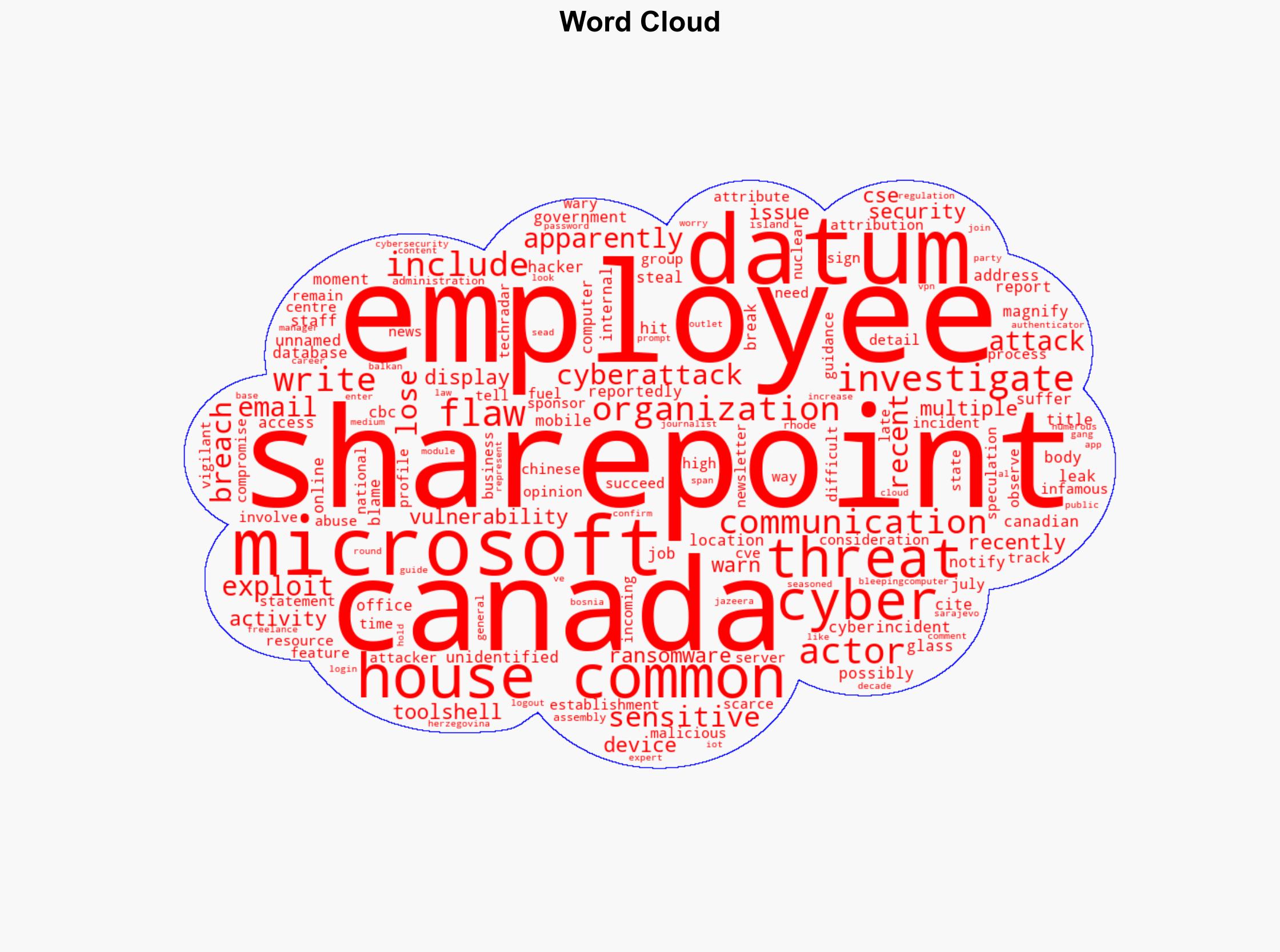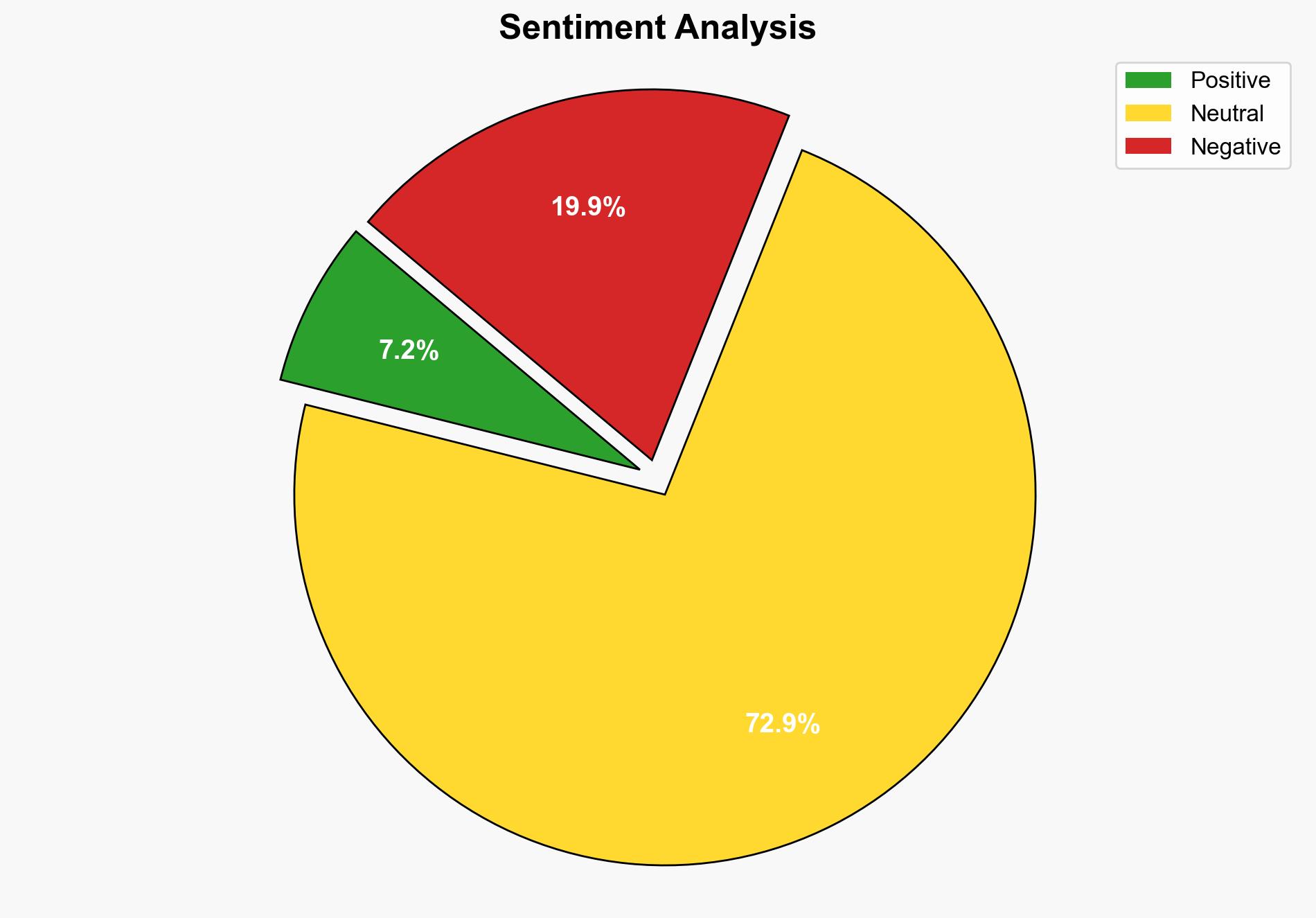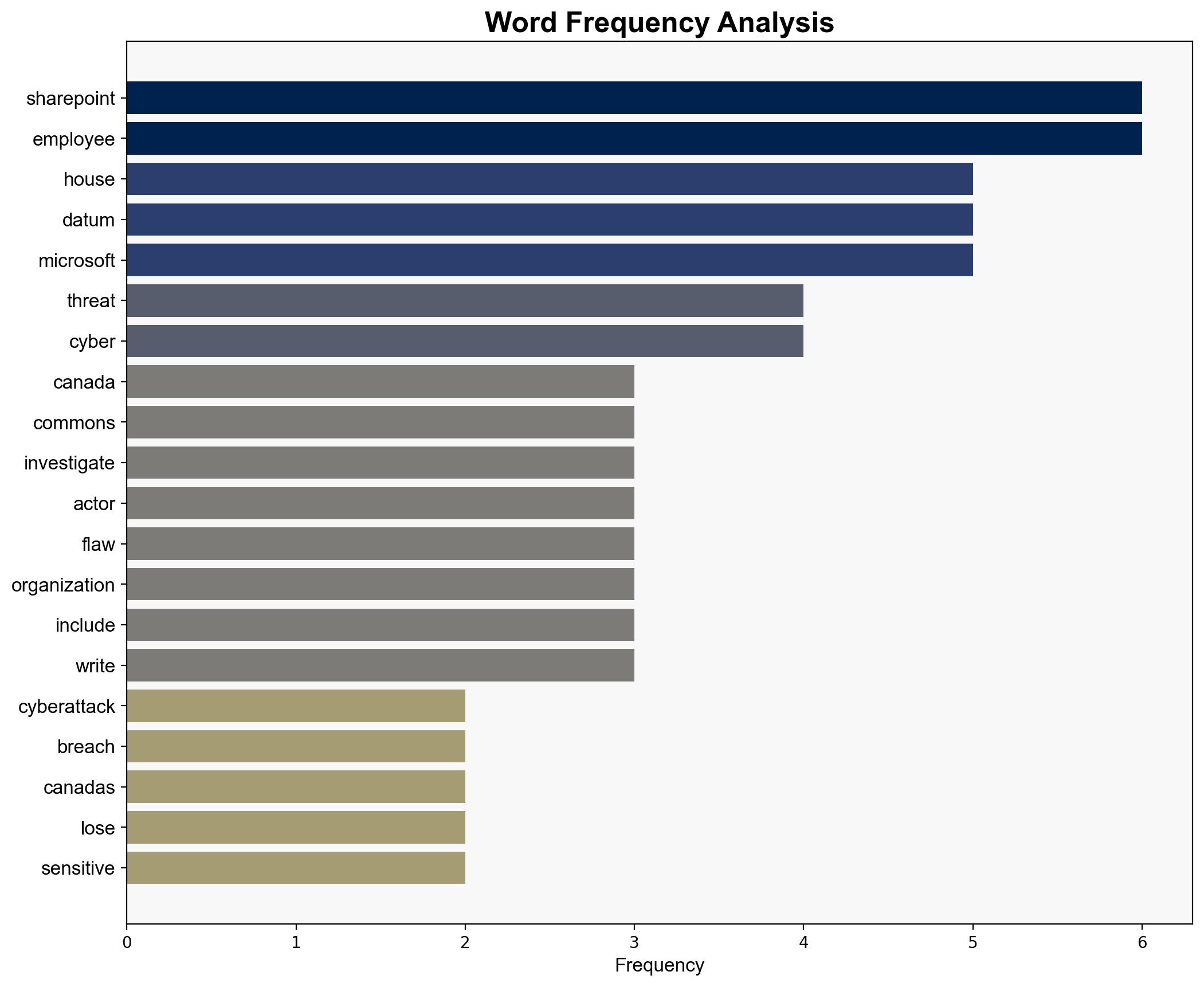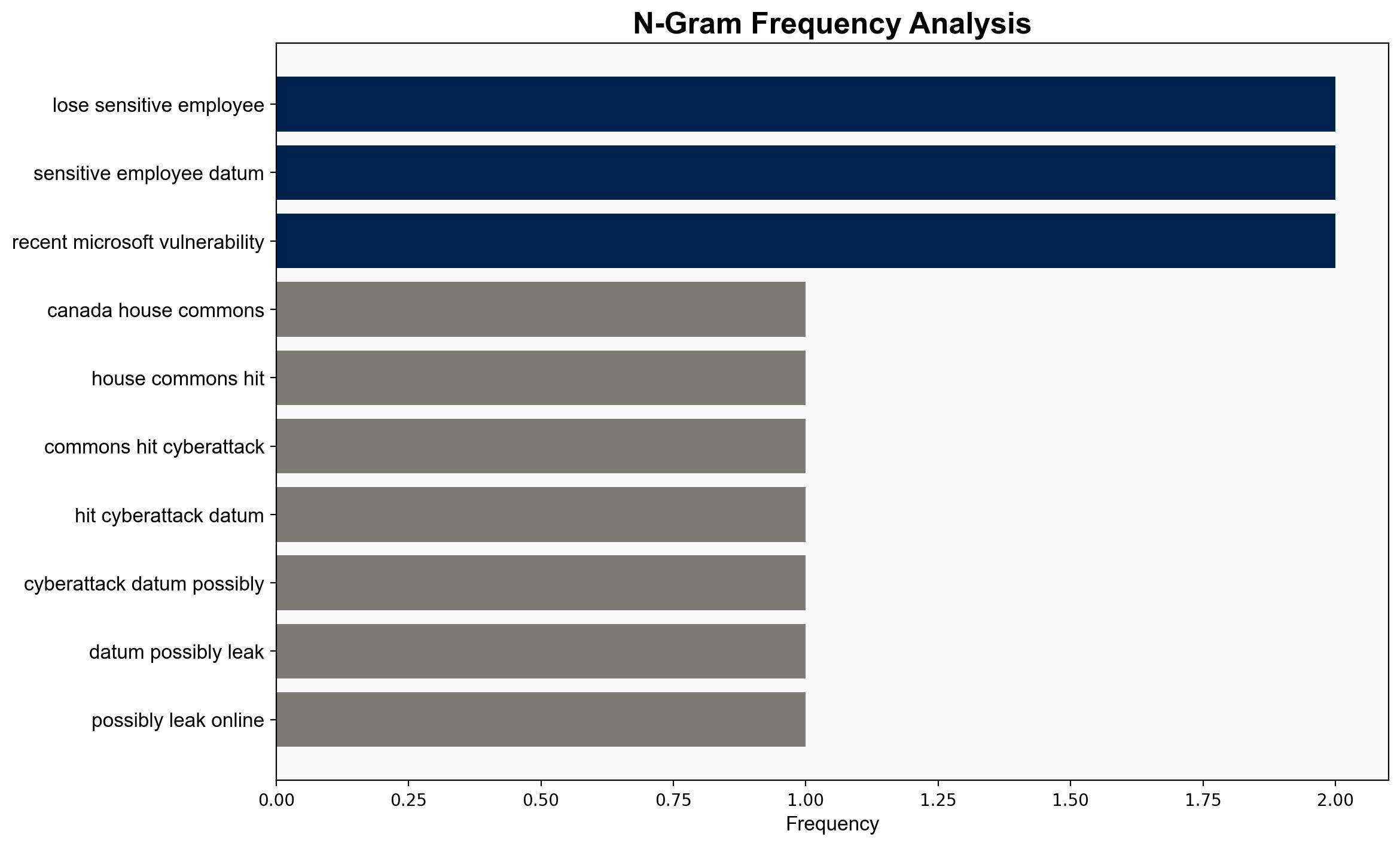Canada’s House of Commons hit by cyberattack data possibly leaked online – could Microsoft SharePoint be to blame – TechRadar
Published on: 2025-08-15
Intelligence Report: Canada’s House of Commons hit by cyberattack data possibly leaked online – could Microsoft SharePoint be to blame – TechRadar
1. BLUF (Bottom Line Up Front)
The most supported hypothesis is that the cyberattack on Canada’s House of Commons exploited a vulnerability in Microsoft SharePoint, leading to data leakage. Confidence in this assessment is moderate due to the presence of corroborating technical details and warnings from cybersecurity agencies. Immediate action is recommended to patch vulnerabilities and enhance monitoring systems.
2. Competing Hypotheses
1. **Hypothesis A:** The cyberattack on Canada’s House of Commons was executed by exploiting a known vulnerability in Microsoft SharePoint, leading to the leakage of sensitive employee data.
2. **Hypothesis B:** The cyberattack was not directly related to Microsoft SharePoint but was instead a result of a broader, multi-vector attack strategy targeting various systems within the House of Commons.
Using the Analysis of Competing Hypotheses (ACH) 2.0, Hypothesis A is more supported due to specific mentions of the SharePoint vulnerability and corroborating warnings from cybersecurity agencies about its exploitation. Hypothesis B lacks direct evidence linking other systems to the breach.
3. Key Assumptions and Red Flags
– **Assumptions:** It is assumed that the SharePoint vulnerability was unpatched at the time of the attack. Another assumption is that the threat actor had the capability to exploit this specific vulnerability.
– **Red Flags:** The lack of detailed technical analysis or forensic evidence in the report raises questions about the completeness of the investigation. The attribution to a specific threat actor remains speculative.
4. Implications and Strategic Risks
The exploitation of a known vulnerability in a widely used platform like SharePoint suggests a significant risk of similar attacks on other governmental and private sector entities. This incident could lead to increased scrutiny on software vulnerabilities and pressure on vendors to improve security measures. Geopolitically, if state-sponsored actors are involved, it could escalate tensions and lead to retaliatory cyber actions.
5. Recommendations and Outlook
- **Immediate Actions:** Patch all known vulnerabilities in Microsoft SharePoint and other critical systems. Enhance monitoring and incident response capabilities.
- **Scenario Projections:**
– Best Case: Rapid patching and improved security measures prevent further breaches.
– Worst Case: Continued exploitation of vulnerabilities leads to additional data breaches and potential geopolitical fallout.
– Most Likely: Increased cybersecurity measures mitigate immediate risks, but ongoing vigilance is required.
6. Key Individuals and Entities
– Microsoft (as the vendor of SharePoint)
– Canada’s House of Commons
– Canadian Centre for Cyber Security
– Communications Security Establishment (CSE)
7. Thematic Tags
national security threats, cybersecurity, counter-terrorism, regional focus




